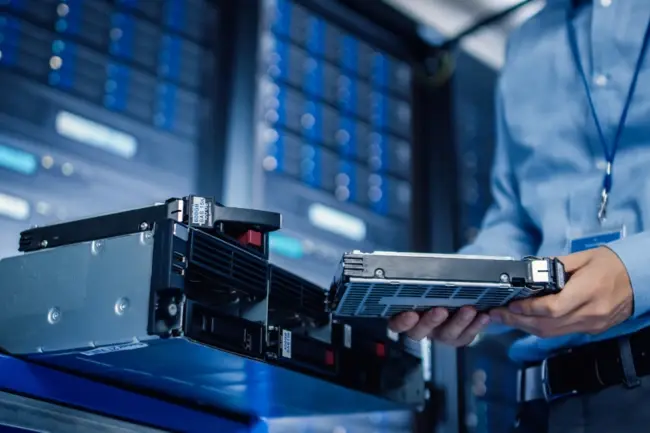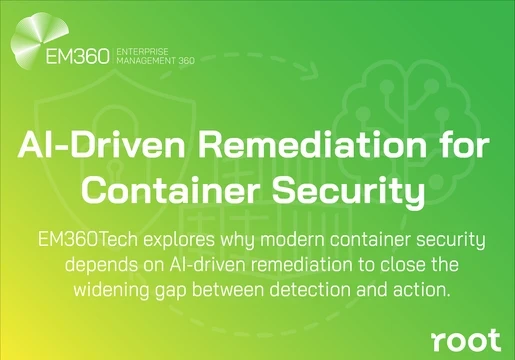Article contributed by Alexandra White, Networks Hardware
Computer hardware refers to the physical components that make up a computer system. This includes things like CPUs, GPUs, motherboards, RAM, hard drives, solid state drives, and network interface cards.
There are many different risk mitigation methods for protecting computer hardware from damage and loss.
Some common strategies include using backup power supplies and surge protectors for protecting against power surges. Another basic strategy is to keep firmware and software up to date to help protect against malware and other security threats.
Computer hardware can be expensive to replace, so it is important to take steps to protect it from damage and loss. By using more advanced risk mitigation methods you can help keep your computer hardware safe and functioning properly for even longer.
Let’s start with the internet as many that’s where many security threats come from.

Modem and Router
Mitigating the risks associated with modems and routers requires taking a few simple, yet effective, steps.
Change the default passwords on both devices. Default passwords are easily guessed and provide easy access to your network for anyone who knows them.
You should always keep your devices up to date with the latest firmware and security patches. This ensures that any known vulnerabilities are addressed, reducing your risk of being hacked or attacked.
Use a strong firewall on your network. A good firewall can help block malicious activity and prevent unauthorised access to sensitive information stored on your devices.
By keeping your devices up to date and secured with strong passwords and a firewall, you can help protect yourself from potential attacks and keep your data safe.
CPU Hardware Risk Mitigation
CPU is the central processing unit, your computer’s central processor.
There are a number of steps that can be taken to mitigate the risk associated with using hardware-based CPU security mechanisms. These include:
1. Understanding the potential vulnerabilities of your specific CPU and taking appropriate steps to protect against these risks. This may involve using software patches, updating firmware or making changes to your system configuration in order to limit access or increase monitoring capabilities.
2. Evaluating the effectiveness of your chosen security mechanisms on an ongoing basis. This includes regularly testing for vulnerabilities and verifying that the protections you have in place are adequate.
3. Implementing strong security policies and procedures that cover all aspects of using hardware-based CPU security mechanisms. This should include specifying who is authorized to access these devices, as well as requirements for password management, use of encryption protocols, and other cybersecurity best practices.
GPU Hardware Risk Mitigation
GPU is a graphics processing unit which accelerates the creation of images to show on your computer’s screen.
GPU hardware risk mitigation methods, also known as GPU security, is the practice of safeguarding GPUs from potential attacks. This can be done through a variety of methods, including but not limited to:
– Hardware security features: Many GPUs come with security features that can help protect them from attack. For example, many GPUs include built-in fail-safes and tamper-evident hardware seals that can alert you to any unauthorised changes.
– Security software: There are also various security software tools available that can help protect GPUs from attack. These might include antivirus programs, firewalls, and other software that monitors for suspicious activity or intrusions.
– Physical security: Another important layer of protection is physical security. This might involve keeping GPUs in locked cabinets or rooms, or using security cameras and other physical security measures to deter would-be attackers.
Motherboard Hardware Risk Mitigation
Motherboard (for Apple users, “Logic Board”) is a circuit board and serves as a joint connecting unit for all your computer’s hardware to keep it connected to the processor.
There are a few different ways to mitigate the risk of motherboard hardware failures, including using redundancy, using fault tolerance, and using monitoring. Specific education is also one more important factor to consider.
Redundancy
Redundancy involves having multiple identical systems in place so that if one fails, the other can take over. This can be done in hardware or software form.
Fault tolerance
Fault tolerance allows systems to continue operating even when certain parts have failed or are no longer functioning. It’s done by using multiple systems to share the workload, creating backups of critical data so that it can be restored if needed, and having spare hardware components as backups in case something fails.
Monitoring
Monitoring involves actively checking the status of systems and components to identify problems before they cause failures. This can be done with logs, performance counters, and other software tools. It can also involve having people actively watching for problems so that they can be corrected quickly before they cause significant damage or downtime.
Education and Training
One mitigation method that is often overlooked is education and training.
By improving the knowledge of employees about how systems work, how different components interact, and what the potential risks are, they can be more likely to identify and correct problems before they cause major issues.
Which mitigation method is best for a particular organisation depends on a number of factors, including the type of business, the size of the organisation, the criticality of the systems, and the budget. No single method is likely to be perfect for all situations, so it is important to choose the right mix of methods to reduce the risk of motherboard hardware failures to an acceptable level.
RAM Hardware Risk Mitigation
RAM hardware risk mitigation methods involve taking steps to protect the RAM from being damaged or corrupted.
One way to do this is by using a memory chip shield, which is a protective casing that helps keep the RAM chips cool and prevents them from being bent or scratched.
Another method is to use a heatsink, which helps dissipate heat from the chips and prevents them from overheating.
Another common method is to create a slot cover, which helps protect the RAM if it is loose or comes out of place.
You can also use an anti-static wristband, which helps prevent static electricity from damaging the chips or disrupting their performance.
Hard Drive Hardware Risk Mitigation Methods Explained
There are a few different ways that you can mitigate the risk associated with hard drive failure. You can back up your data regularly, use an encryption program to protect your data, or use a RAID system to improve data redundancy.
Backup Your Data Regularly
By backing up your data, you will be able to recover all of your important files in the event that your hard drive fails.
There are many different options for backing up your data, including external hard drives and cloud-based backup services.
Use Encryption
Another option is to use an encryption program to protect your sensitive data.
These programs allow you to create a password-protected container on your hard drive that can only be accessed by entering the correct password.
RAID system
Finally, you can use a RAID system to improve data redundancy and prevent against data loss in the event of hard drive failure.
A RAID system is a group of hard drives that mirror each other's data. This means that if one hard drive fails, the others will still have a copy of the data. RAID systems are typically used by businesses, but they can also be used by individuals who want to protect their important data.
Solid State Drive Hardware Risk Mitigation
RAID Configuration
Mitigating the risk of hardware failure on a solid state drive (SSD) can be done in a few ways. One is to use already mentioned RAID configuration, which will provide some redundancy if one drive fails.
HD Sentinel
Another way is to use a tool like HD Sentinel to monitor the health of your drives and predict failures before they happen. You can also do things like checking for firmware updates regularly, which can help to ensure your drives are working properly and staying up-to-date with the latest hardware improvements.
Network Interface Card Hardware Risk Mitigation
Network interface cards (NICs) are a key part of computer systems, and they can be at risk of hardware failure. There are several methods that can be used to mitigate the risk of hardware failure on NICs:
Go for a Reliable NIC Manufacturer
Some manufacturers have a reputation for more reliable NICs than others. Do some research to find out which NIC manufacturers have the best reputations for reliability.
Use Quality Cables
Cheap or damaged cables can cause problems with NICs. When possible, use high-quality cables that are designed for use with NICs.
Avoid using damaged ports
If a port on a NIC is damaged, it can cause problems not only with that specific NIC, but also with other devices that are connected to the same system. Be sure to take care when connecting and disconnecting cables from NIC ports, and avoid connecting or disconnecting cables if there is any damage to the port on the NIC.
Use High-Quality Network Switches
Switches that are not of high quality can cause problems for NICs. Try to use switches that have good reputations and that are designed for use with NICs.
Use Proper Power Protection
Power surges and other power problems can damage NIC hardware. Be sure to use a UPS or other power protection device to protect against power surges and other power problems.
Perform Regular Maintenance and Testing on NICs
Regularly performing tests and checks on your NICs can help to detect potential hardware failures before they cause problems with the system. Some tools, such as network diagnostic software, are available for this purpose.
Ultimately, the best way to mitigate the risk of hardware failure is to use high-quality, well-tested components. These are more likely to work correctly over the long term, which can reduce the chances of a system failure.







Comments ( 0 )